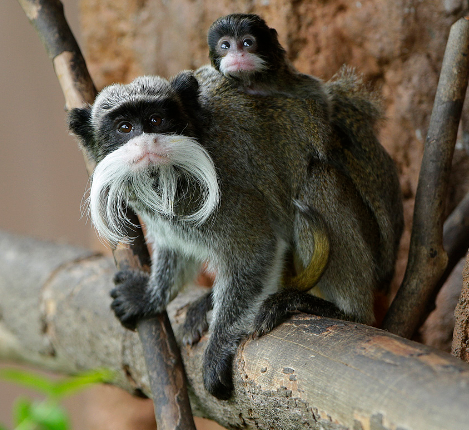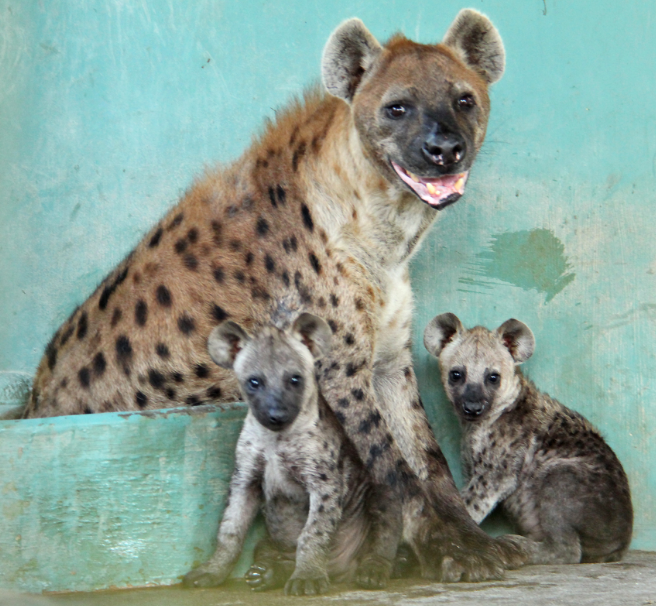More than 700 furry, feathery and scaly young across 150 species were born or hatched in Jurong Bird Park, Night Safari, River Safari, and Singapore Zoo in 2015. Among them, over 40 species are listed as threatened under the *IUCN Red List of Threatened Species.
Dr Cheng Wen-Haur, Deputy CEO and Chief Life Sciences Officer, Wildlife Reserves Singapore, said, “Each of these births and hatchings is significant and is part of Wildlife Reserves Singapore’s efforts to conserve threatened wildlife, particularly in Singapore and Southeast Asia. Breeding under human care allows us to maintain sustainable populations without having to collect from the wild, and our living collection serves to inspire positive actions in people to conserve our environment and biodiversity.
Among the most exciting births of the year is that of a critically endangered Sumatran orangutan born on 16 September 2015. The primate is the great-grandson of Singapore Zoo’s late icon, Ah Meng. To date, over 40 orangutans have been born in Singapore Zoo. To facilitate the breeding of these charismatic apes and ensure genetic diversity, orangutans born in the park have been sent to zoological institutions in Malaysia, India, Vietnam, Japan, Australia and New Zealand as part of a worldwide exchange programme.
2015 also saw the births of critically endangered cotton-top tamarins, a species of tiny primates, and endangered Southern white rhinoceros and pygmy hippopotamus in Singapore Zoo. The park has an exceptionally impressive track record with all three species, welcoming over 80 cotton-top tamarins, 16 Southern white rhinoceroses and 23 pygmy hippopotamuses in the past 42 years.
River Safari welcomed another manatee calf in October, bringing the park’s total herd to 13 individuals. The park also saw the hatchings of unusual amphibians like the fire-bellied newt, a species of small newt native to China, and the births of capybara, super-sized rodents native to South America.
Animal births in Night Safari were particularly exciting as many of the species are from Singapore or Southeast Asia, like Malayan sambar deer, Malayan bearded pig, binturong, hog badger, and the endangered Burmese brow-antlered deer.
Moving beyond the region, Night Safari saw three births of Indian crested porcupines in two years. The park also welcomed two pups to its cackle of spotted hyenas, bringing the park’s total to 11.
Jurong Bird Park continues to be actively involved in the breeding of threatened species, with the hatchings of two Bali mynahs and eight Luzon bleeding-heart doves. The park works closely with Avilon Zoo and the Department of Environment and Natural Resources (DENR) in the Philippines and Begawan Foundation in Bali, Indonesia, to increase the off-site numbers of these precious birds. The Bali mynah additions in 2015 are particularly special as it is the first time these chicks are hand-raised. All progenies will eventually be sent back to their respective home countries to be released into the wild.
Also joining the park’s avian collection is the lesser bird-of-paradise, the first successful hatching in over a decade. These birds, prized for their beautiful plumage, are notoriously hard to breed in captivity because of their unique courtship rituals prior to mating.
Dr Cheng added, “Captive breeding programmes play an important role in conserving threatened animal species whose numbers are declining as a result of activities like habitat destruction and poaching.
Some of them can be valuable assurance colonies against extinction in the wild, with the aim of ultimate release back to nature, while all of them are ambassadors representing their relatives in the wild.”
Wildlife Reserves Singapore
80 Mandai Lake Road
Singapore 729826








